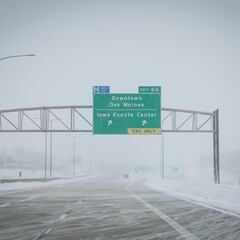What is a caucus? Is it the same as a primary?
While most states host primaries to decide which candidates will make it to the November ballot, a few states use a caucus system. What is the difference?


Whether the public is ready or not, election season is here, and the candidates seeking the GOP presidential nomination are hours away from facing off for the first event of the year: the Iowa caucus. Typically, the Democrats also hold a caucus in the state, but this year, they have opted for a primary, meaning voters will cast a secret ballot.
What is a caucus?
On the night of the caucus, voters gather at community centers, schools, and churches to participate in the voting process. During the caucus, all the campaigns are represented. Sometimes, the candidates are present at the caucus and give a brief speech to persuade the voters. In case the candidate is absent, a representative from their campaign delivers the speech on their behalf. Once all the speeches are given, the voters cast their ballots, which are then counted and announced.
In 2016, Donald Trump won the Iowa caucus, and if the polls can be trusted (which we know is not always the case), he will win the one scheduled for Monday, 15 January, in Iowa as well. Former US Ambassador to the United Nations, Nikki Haley, has gained momentum in the polls but still remains far behind the former president.
2024 Iowa Republican Caucus:
— Political Polls (@Politics_Polls) January 14, 2024
Trump 48% (+28)
Haley 20%
DeSantis 16%
Ramaswamy 8%
Binkley 1%
Hutchinson 1%
.@jaselzer/@DMRegister/@NBCNews, 705 LV, 1/7-12https://t.co/AHS6ybu6RM
What is a primary?
A primary is a standard election where polling stations are set up, and voters cast a secret ballot that is then tabulated. A caucus is a much more participatory electoral event, while a traditional primary is what most voters are used to.
What are the different types of primaries?
However, not all primaries are exactly the same. For example, some states only allow voters who have a party affiliation to participate. This is the case in eight states, including Delaware and Florida. Other states allow independent voters to participate, but if you have a party affiliation, you cannot vote in another primary party. This is what is called a ‘partially-closed primary’ and is how these sorts of elections are conducted in:
- Connecticut
- Idaho
- Kansas
- Maryland
- North Carolina
- Oklahoma
- Oregon
- South Dakota
- Utah
- West Virginia
In partially open primaries, voters are allowed to participate in the primary of a party they are not registered with, but they must declare their choice when selecting a ballot. Fully open primaries allow all voters, regardless of registration, to select the ballot they would like to vote for. This option provides the most flexibility to the voters and is the most common type of primary.
Related stories
In Washington and California, all candidates appear on the ballot together. The two candidates with the highest number of votes in the primary face off in the general election.
Louisiana does not have primaries. Instead, a candidate must garner at least fifty percent of the vote in the general election. If no candidate meets this threshold, then the top two candidates face off in a runoff.

